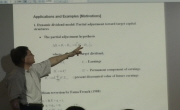Purpose: Hypertrophic pyloric stenosis (HPS) is the most common cause of gastric obstruction in newborns. Extra-mucosal pyloromyotomy can be performed through a small laparotomy or laparoscopy. The aim of this study was to compare the two surgical tec...
http://chineseinput.net/에서 pinyin(병음)방식으로 중국어를 변환할 수 있습니다.
변환된 중국어를 복사하여 사용하시면 됩니다.
- 中文 을 입력하시려면 zhongwen을 입력하시고 space를누르시면됩니다.
- 北京 을 입력하시려면 beijing을 입력하시고 space를 누르시면 됩니다.


Hypertrophic Pyloric Stenosis: 10 Years' Experience with Standard Open and Laparoscopic Approach
한글로보기https://www.riss.kr/link?id=A107613817
- 저자
- 발행기관
- 학술지명
- 권호사항
-
발행연도
2021
-
작성언어
English
- 주제어
-
등재정보
SCOPUS,KCI등재,ESCI
-
자료형태
학술저널
- 발행기관 URL
-
수록면
265-272(8쪽)
- DOI식별코드
- 제공처
-
0
상세조회 -
0
다운로드
부가정보
다국어 초록 (Multilingual Abstract)
Purpose: Hypertrophic pyloric stenosis (HPS) is the most common cause of gastric obstruction in newborns. Extra-mucosal pyloromyotomy can be performed through a small laparotomy or laparoscopy. The aim of this study was to compare the two surgical techniques. We also analyzed the incidence of HPS in infants in the last 10 years in relation to the demographic trend of our province. Methods: We analyzed all the cases of HPS treated at our Unit between January 2010 and December 2019. The data were obtained from operating systems. Data about the demographic trends, in particular, the number of births and the population residing in the province of Verona from 2010 to 2019, were also retrieved. Results: During the study period, 60 patients were treated for HPS and met the inclusion criteria. Of these, 56 males and 4 females with an average age of 38±14 days at surgery were included. No differences were found in terms of the duration of surgery, post-operative complications, duration of hospitalization, and weight at the time of surgery. The only statistically significant data was the chlorine level in cases with and without post-operative vomiting (97±3.5 vs. 102±3.3 mmol/L, p<0.05). There was a lower incidence of HPS from 2014 to 2019; however, there was no significant evidence regarding the correlation between this and the reduced birth rate recorded in the province of Verona during the same period. Conclusion: Although laparoscopic pyloromyotomy is a highly complex procedure, it is a feasible alternative to the classic open technique.
동일학술지(권/호) 다른 논문
-
- The Korean Society of Pediatric Gastroenterology
- Bilge, Serap
- 2021
- SCOPUS,KCI등재,ESCI
-
Hepcidin Levels and Pathological Characteristics in Children with Fatty Liver Disease
- The Korean Society of Pediatric Gastroenterology
- Tsutsumi, Norito
- 2021
- SCOPUS,KCI등재,ESCI
-
- The Korean Society of Pediatric Gastroenterology
- Pavic, Ivan
- 2021
- SCOPUS,KCI등재,ESCI
-
Efficacy of Living Donor Liver Transplantation in Patients with Methylmalonic Acidemia
- The Korean Society of Pediatric Gastroenterology
- Jang, Jae Guk
- 2021
- SCOPUS,KCI등재,ESCI




 ScienceON
ScienceON






